Fly fishing for trout can be one of the most satisfying things you ever do. However, the entire process can also be tedious and frustrating, especially for a beginner. Most people who do not fly fish find it almost impossible to catch any trout on the fly. Well, here is a little secret: fly fishing for trout is not as challenging as you think.
Fly fishing for trout can be challenging, especially for beginners. It can be hard to catch any trout on the fly if you do not know how to read the river and understand fly patterns or you have been using the wrong gear. However, you can improve your fly-fishing skills by avoiding simple mistakes and adhering to the basics.
If you want to fly fish for trout, you need to understand the basic cast methods and identify what is fish-like. This article will give you 25 tips to help you improve your fly-fishing skills for trout. The article is further divided into three sections for more comprehensive coverage of all fly-fishing techniques:

Section 1: Nymphing
Fly fishing is one of the most popular fishing techniques. This is because nymphing is an effective way to fly fish for trout in any water. Accordingly, fly fishing with nymphs is a vital technique you should strive to master as an angler.
What is nymphing?
Nymphing is a broad term that anglers use to refer to a wet fly that looks like a subaquatic insect. Nymph flies are designed in a way that they look precisely like insects in their larvae stage. This is mainly due to the fact that trout like eating nymphs.
Nymphing is usually done under the water surface. Accordingly, nymphs are always weighted to ensure that they remain beneath the water surface. This makes it an effective way to catch trout since they spend most of their time eating underwater.
Below are nymphing techniques and tips for catching plenty of trout:
1. Know the difference between nymphing and dry fly fishing
The first thing to keep in mind is that nymphs and a dry fly are two different things. Dry Fly fishing involves using a duplicate of a bug in its adult stage. Additionally, dry line fishing involves the fly drifting on the water surface. On the other hand, nymphing is done under the water surface with a nymph in its larvae stage.

2. Go deeper with the fly
Trout lie deep underwater, and that is where they feed. In most cases, they tend to come up to about 6 inches of the river bed, get food, then dive deep again to rest. Therefore, if you want to catch trout, follow them deeper into the water with the fly.

3. Consider a weighted fly
As mentioned earlier, nymphing is done below the water surface. Therefore, you may want to ensure that your nymph sinks. To do this, you need a heavily weighted fly. The weight depends on the current and depth of the stream.
Consider using bead-head patterns in fast currents. However, there are many ways you can add weight to fly fishing flies for trout to ensure they go deep beneath the water surface such as split shot or weighted puddy.

4. Avoid distractions
Trout fly fishing requires your utmost attention because the pull can sometimes be very light and subtle to notice. In this case, you should be entirely focused on the indicator.

5. Strike at the first sign
For better results, always strike at the first sign you get on your indicator. Whenever there is a reading, know that trout is on the nymph. If you wait for the second pull, you will miss the fish.
6. Strike lightly
It is one thing to strike at the first sign and another to strike with all your strength. You should know the difference and keep your striking as light as possible. Engaging your entire shoulder to strike may rip off the fly from the trout's mouth, and that's how you lose your fish.

7. Use seasonal fly patterns
Trout can sometimes be fussy when it comes to your nymph fly pattern. As an angler, you must know the insect population is active during the time of year you are fishing to help you identify different nymph fly patterns to use for fly fishing.

8. Cast slowly
How you cast your nymph determines your success at fly fishing. Unlike a dry line where you keep the loop narrow, nymphing may require keeping the loop wide and cast smooth. Watch this video for a better casting technique.
9. Train how to roll cast
When you are fly fishing with many indicators and weight, you have to ensure that your leader spends the shortest time in the air. Additionally, if you are nymphing in a tight spot, you will want to roll the cast as smoothly as possible. Additionally, avoid wide loops when nymphing in tight and crowded spots.
10. Set your rig properly
Always focus on the stream depth when setting your rig, unless you are on shallow waters. In most cases, you will want more than 6 feet. Check out this video on how to set up your nymphing rig correctly.
Section 2: Dry Fly Fishing
In dry fly fishing, you should prioritize using a dead drift for a more natural presentation. This means that you have to ensure that your floating fly moves at the same speed and direction as the current.

What is dry fly fishing?
Many anglers prefer dry fly fishing to any fly fishing technique. When it comes to fishing beneath the water surface, you have to guess where the fish is because you cannot see it. This may require that you rely on signs from your indicator. Accordingly, it is hard to track the progress of your fly.
In contrast, many anglers love dry fly fishing because they get to know precisely where the fish is and can observe when the fish is eating. This allows for a more precise insight into a fish's eating habits. Accordingly, you get to know when the fish takes the fly.
The best way to catch trout using the dry fly technique is to ensure you master three elements; your positioning, casting, and line control. Here are tips on how to fly fish for trout using the dry fly technique:
11. Consider your fly selection
The first thing to master when dry fly fishing is the choice of fly fishing flies for trout. Think about the size, silhouette, and color.
- Size: ensure that you are the same size as the insects emerging or landing on the water.
- Silhouette: this is the shape of the fly when in water. You have to ensure you mimic the shape of the insects in the water.
- Color: the color is something you need to consider when dry fly fishing. You may find it challenging to track your fly in most cases, especially when fishing in broken waters. You may need bright colors to help you set the hook. However, you have to ensure that trout won’t notice the difference by sticking to dull colors, such as black.
There are many fly fishing flies assortment to choose from. These factors will help you choose the right fly and improve your success rate.
12. Choose the proper dry fly dressing
A dry fly is often a bug in its adult stage, wading on the water surface. This means that the dry fly does not sink below the water surface. Therefore, you have to dress your dry fly well to enhance its performance.
Examples of dry fly dressing include Aquel, Flyagra, and Shimishake. Many other options exist, and you have to identify the best dry fly dressing for your situation.
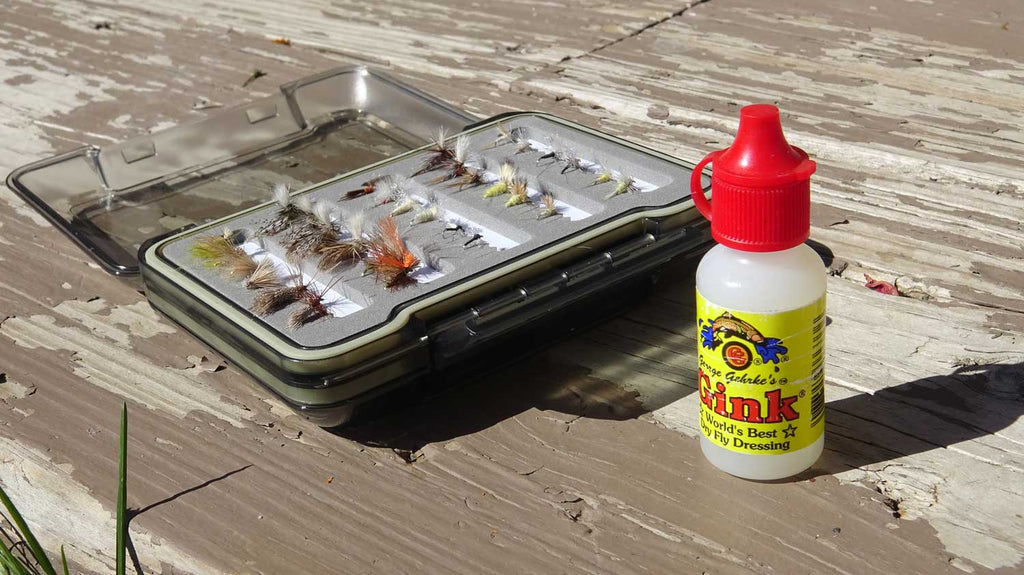
13. Go for long leaders and fine tippet
Trout has the most curious eye, which means you need long leaders and a fine tippet for dry fly presentation. For instance, you should consider using leaders of more than 9 feet and thin tippets in strong currents. For catch and release sections, you may want to be very crafty and sneaky to entice trout into biting your dry fly.

14. Polish your casting technique
Whether you are wading or float fishing, you should be very precise in casting your fly. A misplaced cast, even by a few inches, can be the difference between hook-ups and drift. Therefore, you have to ensure you polish your casting skills for more effectiveness.

15. Improve your drift
A drift is how your dry fly floats on the water surface. This factor is essential in enticing trout to take a bite. Make sure you mend upstream and downstream to improve how you deliver your dry fly.
A well-timed mending will help you deliver the fly for an extended period without being affected by drag resulting from the water current.
16. Choose your hatches wisely
You do not want to rely on seasonal hatches since they are very predictable. For the best results, you may wish to consult your fly dealer for any updates. Additionally, you have to know the river you fish in and how seasons affect hatches.

17. Observe attentively
You have to be very attentive before you cast or set foot in the water. Additionally, observe to know where the fish are feeding and the type of bug they eat. This helps you know where you should place your first cast.

18. Improve your positioning
Another way being observant helps you is that you get to know where to position yourself better. An observant angler will always know where to present the dry fly. Whether you are facing casting obstacles or harsh water currents, better positioning helps you eliminate the challenges. You can achieve better positioning by repositioning your cast angle if you are wade fishing.

19. Wade stealthily
You have to ensure that you move slowly when wade fishing to avoid scaring trout away. Moving stealthily allows you to observe better and avoid spooking fish. It would help if you considered wearing naturally toned clothes to help hide your presence. Additionally, make sure you do not bump your boots off rocks and logs.
20. Dance when the time is right
After setting your hook, the next thing is preparing to move. If you want to catch trout, learn to move at the right time. Do not just sit still. For the best results, you may want to reposition yourself to land the fish.
Section 3: Streamer Fishing
The last fly fishing technique is streamer fishing. Similarly, there are things you should learn to ensure you improve your success rate when using this method.
What is streamer fishing?
Streamer fishing is a fly fishing technique where anglers use submerged flies, known as streamers. A streamer is designed to depict a baitfish, a smaller fish that large fish love eating.

Streamer flies can also be designed to be like crayfish, leech, or any underwater morsel that a larger fish may feed on. The sizes of streamers vary significantly, depending on where you want to fish and the size of trout you expect to catch.
Steamers require attentive fishing since they require active retrieval compared to dry flies or nymph rigs. In other words, streamer movement is mainly caused by you stripping in line to draw your fly back and set another cast. If you want to improve your streamer fishing techniques, you will want to follow these tips:
21. Forget about a long leader
Streamer fishing requires excellent control. As much as a long leader is something you should prioritize when dry fly fishing, you should ditch it for the bane when streamer fishing.
When streamer fishing for large trout, you need a better connection with the fly to enhance control. A shorter leader helps you connect better. This aspect means that you may not need a leader, after all. Alternatively, opt for a straight piece of fluorocarbon. You may need not more than 4 feet for better results. The shorter, the better.
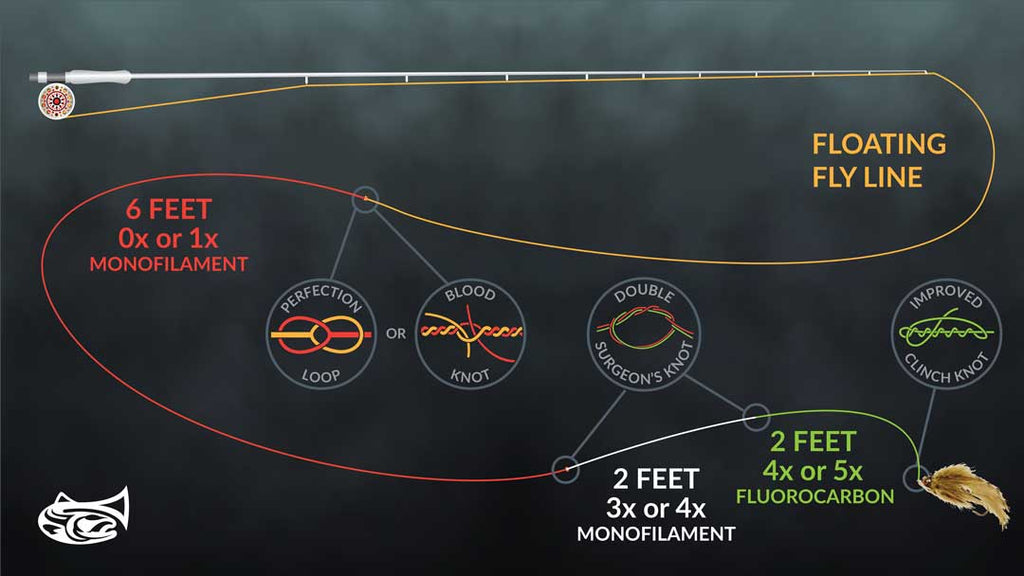
However, you may want to reconsider this, especially if you are fishing a floating line. In this situation, you will need a longer fluorocarbon to help you sink the fly properly. On the other hand, if you are fishing a sinking line, you should keep it as short as possible.
22. Fish when you mean it
The worst mistake you can make when streamer fishing is to approach it from a covering water perspective.
In most cases, anglers use this tactic when streamer fishing, opposed to dry fly fishing, where the fish to a particular rising fish with the hope of enticing a bite. Almost everyone goes into the water to fish in dry fly fishing, not just cover a vast section.
However, when it comes to streamer fishing, this is not usually the case.
Apart from covering water, you should also consider identifying holding lines and how you can deliver flies into the positions you identify. In other words, fish like you mean to fish.
23. Diversify your tactics
For most streamer fishermen, the most effective tactics are always the striped retrieve and the down-and-across swings. There is no denying that these techniques work miracles when it comes to catching trout using the streamer method. However, swimming prey, which streamers are made to replicate, can be very dynamic.
Various prey that streamers imitate change their movements as they like. This may mean that they can move downstream in one moment and upstream in the next. Accordingly, such movements are always aimed at avoiding predators, such as trout.
Here is the point; you do not have to stick to one technique to cover all your bases when streamer fishing. You have to experiment with different tactics to increase your chances of catching plenty of fish. For instance, master different ways of presenting your fly. Consider the angles and speed as you also try various drifts and retrieves.

24. Drift differently
Adding on the last tip, there are many ways to streamer fish with better results. When it comes to drifting, you can experiment with other techniques you use in other fly fishing methods. For instance, dead drifting can be an excellent way to get started.
When you choose streamer fishing, you have to know that you will be dealing with swimming prey. However, trout rarely notice prey that is still. Therefore, you have to ensure that you elicit motion where necessary. For instance, you can entice response from trout by fishing in fast-moving waters, plunge pools, or any turbulent section.

25. Work on your retrieve
One of the best techniques, when streamer fishing, is then pumped or jigged retrieve. The method is excellent with trout since it imitates baitfish wandering in water for food. Additionally, this retrieve can imitate an injured small fish, prompting trout to pounce.
You may want to consider using jigged retrieve with your rod held high or in the same position you would hold it when swinging the fly.
Summary
Fly fishing for trout is all about knowing the basics of fly fishing and getting everything else right. You do not have to be a pro at it. However, you must learn to fly fish like a pro if you want the best results. For instance, go through fly fishing flies 101 to identify the types of fly fishing fly for trout you can use in a different situation.
This article has listed 25 tips to help you master the art of fly fishing for trout. The list is not exhaustive. Therefore, you can always add to it and learn more.

About the Author
Matthew Bernhardt, a third-generation Coloradan, grew up at the forefront of the state’s fly-fishing revolution, enjoying time on the water, side by side with experienced guides and lifelong anglers.
By combining his passion for fly-fishing with input from other experienced fly-fishers and guides and his fine arts degree from Colorado State University, Matthew spent five years carefully developing the Drifthook Fly Fishing System, built to help every angler catch more trout.
When he’s not spending time with his wonderful family, you’ll find him out on the water catching MONSTER trout, and he anxiously looks forward to the day when his kids are old enough to join him there.

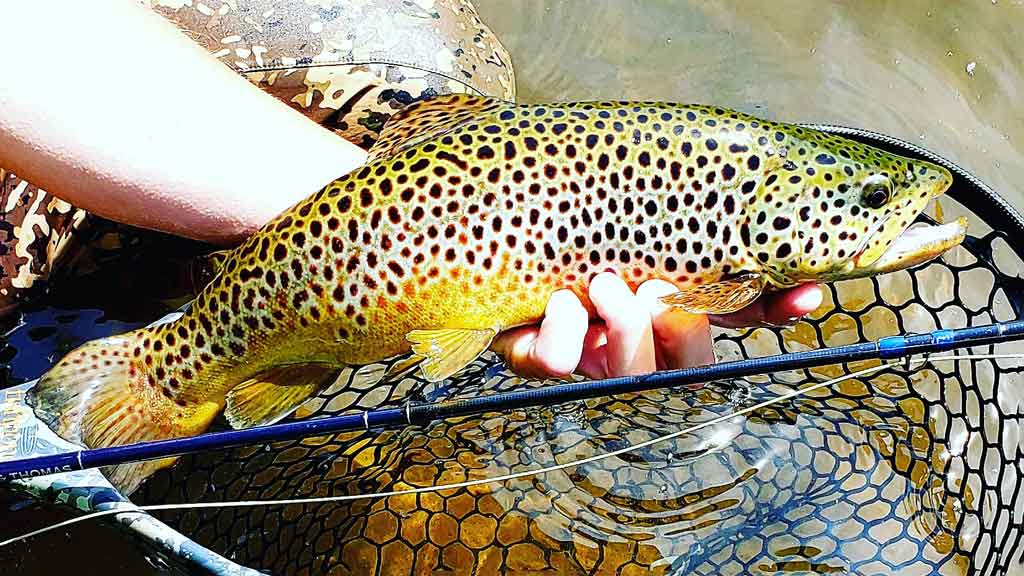


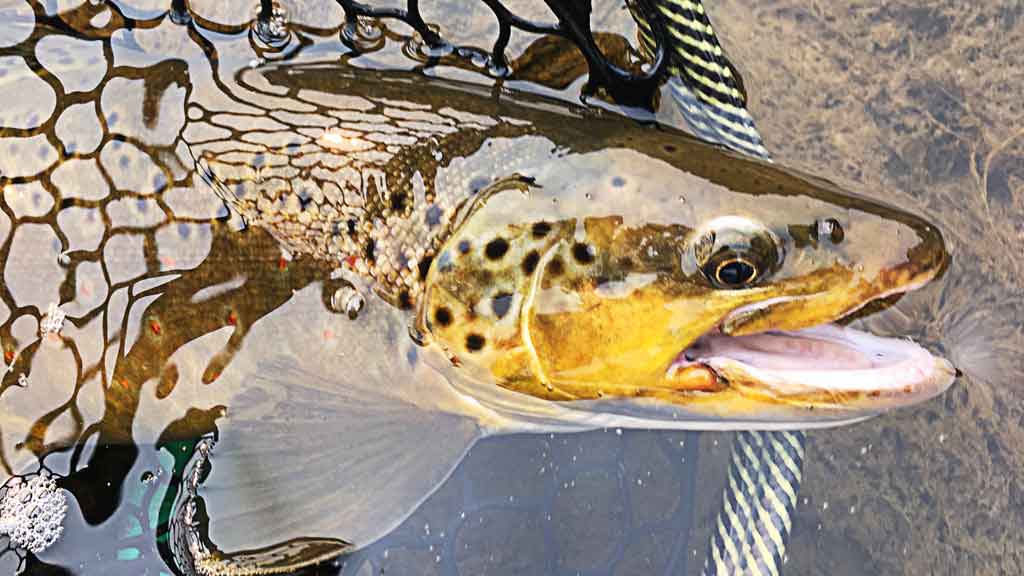
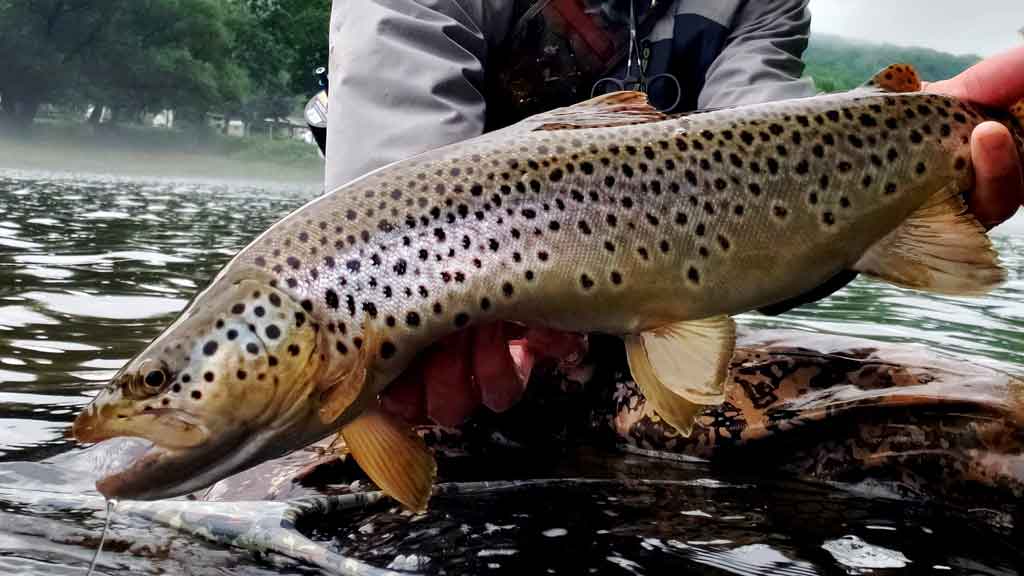
2 comments
Rob R
Great article and tips. I am a beginner and this has been very helpful!
Great article and tips. I am a beginner and this has been very helpful!
Ron Fortier
Morning
I got back into fly fishing a few years ago and relaized how much i had forgotten and how much I never knew. Very helpful article. Relevant topics and graphics. Thenks
Morning
I got back into fly fishing a few years ago and relaized how much i had forgotten and how much I never knew. Very helpful article. Relevant topics and graphics. Thenks